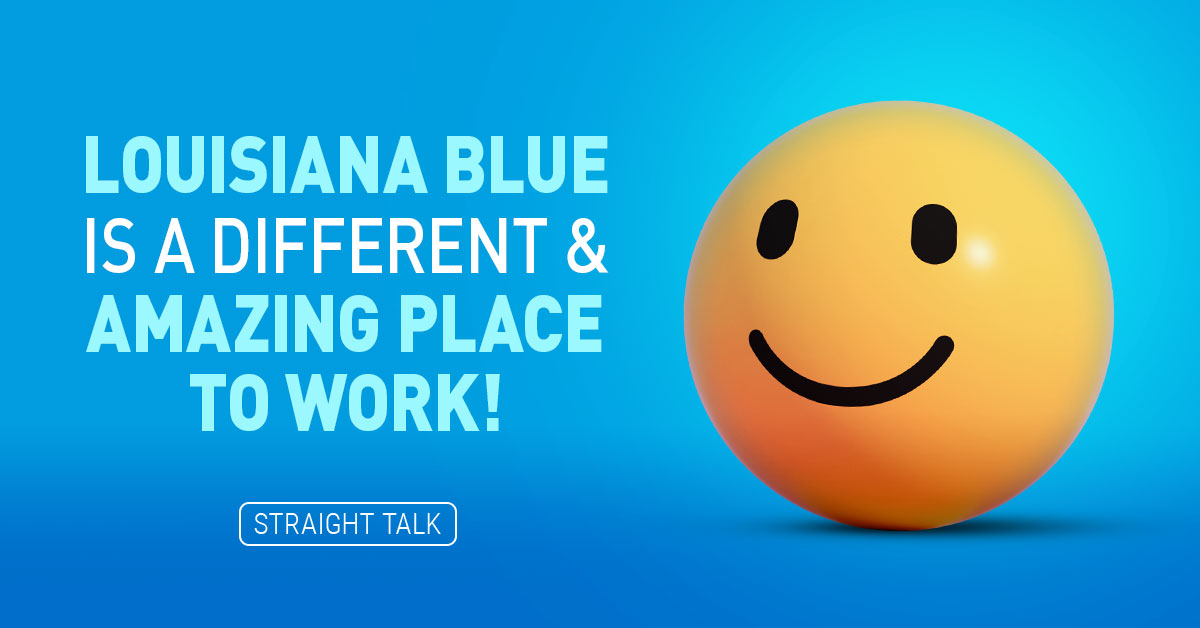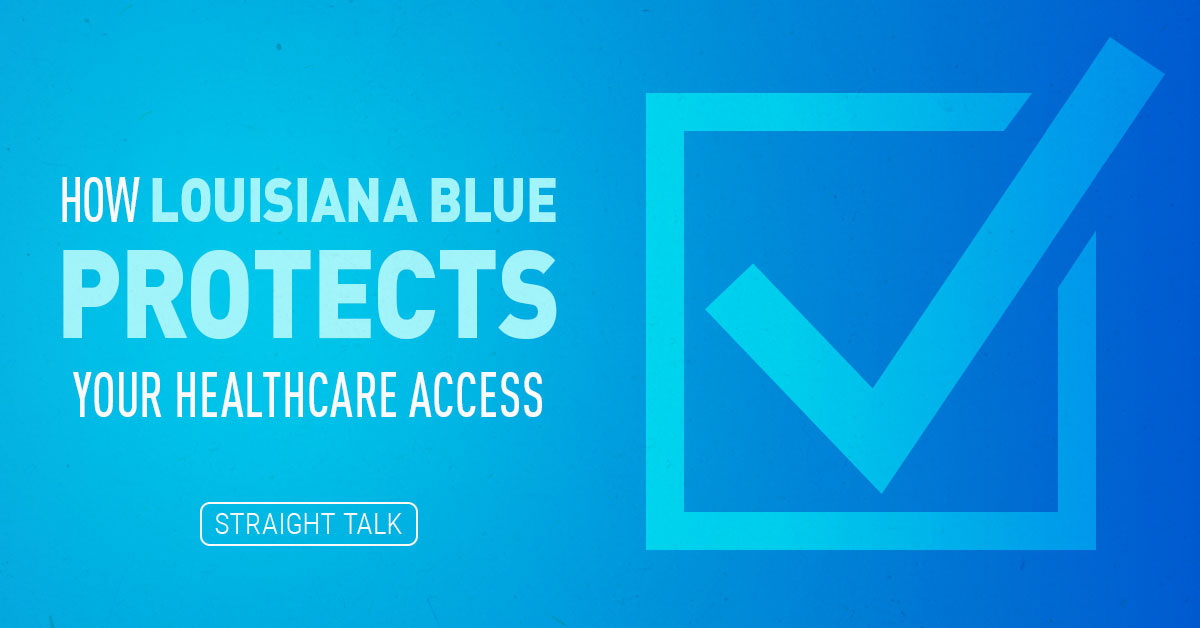I often teach classes in what I call “Health Insurance 101” here at Blue Cross. I want to make sure our employees have a good understanding of what insurance companies like us do and why we are here.
In this, I’ve developed a definition of what a health insurance company really is at its core: a system designed to create sustainable, advanced financing of medical costs by building a diverse, common pool of members willing to contribute to a common pool of money prior to needing those healthcare services.
In 2016, health insurance companies have branched out into lots of different areas and capabilities, but at its core, if a company like Blue Cross fails to do the seemingly simple task of building a diverse risk pool, it will fail. When you read the above definition, it’s critical you focus on the three most important things in it: advanced, common, and medical.
Let’s look at each of these in more detail.
ADVANCED:
Insurance means investing in protection for something that hasn’t happened yet. What would happen if you came home from work today to find your house on fire and then you called a homeowners insurance company and said “I’d like to buy some homeowners insurance… and could you back date that to the first of the month? Oh, and let’s go ahead and cancel that in a few months after you guys have built me a new house. Is that cool? Great!”
You can file that under “conversations that will never happen.” Why? Because it violates the core of insurance – the money and membership was not obtained in ADVANCE of the loss. Pretty simple really. If you could get after-the-fact homeowners insurance, no one could afford it, and no one would sell it because the financials simply don’t work. So it’s easy to see why “advanced” is such a critical piece of the insurance pie.
Unfortunately, on www.healthcare.gov, “advanced” doesn’t always apply because it is far too easy to join up AFTER you get sick. There are three months of wide-open enrollment each year. The people who sign up during those nine months of special enrollment use four times as much healthcare on average and only stay for five months, then they stop paying.
During these other nine months of the year, the government does a lousy job of ensuring people have a good reason to enroll. Literally, the “House-on-Fire” scenario plays out on the exchanges every day, and we are not allowed to intervene. That blows “advanced” up pretty quickly and destabilizes the whole individual market. It’s entirely up to the feds to fix it. So far, they are nibbling around the edges, but they have a long way to go.
Healthcare.gov itself pushes another violation of “advanced” because it encourages users to shop aggressively at every open enrollment, even proposing automatic measures to move members to the cheapest plans without regard to provider networks or benefits! Their position is “everyone should have the second-cheapest silver plan, no matter what that plan offers or covers, or what the network looks like.”
And let me be clear, Blue Cross always knew that we would be signing up some very medically needy people when we participated in www.healthcare.gov, and I take pride every day that we are here to help with their medical costs. But the programs that insurance companies use to get and keep people healthy can take years to work properly and can take huge financial investments to get going before any return on that investment is seen. Prior to www.healthcare.gov, our average individual client stayed with us 47 months, almost four years! Today, thanks to the “save money no matter what” attitude of www.healthcare.gov administrators, the average member only stays with us 18 months.
So ask yourself this: As an insurance company trying to build a stable, affordable insurance risk pool for its members, how much should I invest in improving the health of a member I know will only stay around for 18 months? Certainly LESS than I would invest if I knew he was going to stay around for 47 months, right? For stability in advance, I need longevity, and www.healthcare.gov administrators discourage that. That makes rates go up even more.
COMMON:
When I say “common,” I mean that we want as many people as possible in the risk pool, contributing their money into as large a fund as possible, and we want that population to be as diverse as possible. In our previous “house on fire” example, if all the houses we insured were old, wooden firetraps, the rates would probably be a lot higher than if we had a nice mix of brick houses, stone houses and wooden houses. That’s because some would resist fire much better than others.
Likewise in healthcare, we want a large population of healthy people to help cover the costs of the sicker folks. The larger that population of healthy folks, the lower member contributions (that’s premiums) can be. As we mentioned above, it’s also very helpful if this risk pool is stable because the more people that flow in and out of the risk pool, the less stable (and more expensive) it will be. (Which returns us to the problem with longevity mentioned above.)
A stable risk pool also has a diverse age profile of the insured members, since, in general, age is a pretty good estimator of medical costs and illness. We want our risk pool to have an age profile that looks like the general public as much as possible. If the insured people are older on average, costs will be much higher. We also want to make sure we are charging a fair price by age. We don’t want to charge younger folks one-third as much as older folks, if they only cost one-seventh as much to insure. You get the idea.
You now know why COMMON membership, with as large and diverse a risk pool as possible, is important. But on www.healthcare.gov, the population is disproportionately old and sick. This is because the young and the healthy have been discouraged by the healthcare law and its enforcement from shopping on www.healthcare.gov for a variety of reasons:
- They can now stay on their parent’s work insurance all the way to age 26.
- The Individual Mandate tax that requires coverage now has 27 different exemptions to it. Yes, 27!
- Prices for the young were set by a political/lobbying decision, not by economics, so 25-year-olds are paying 75% too much for their coverage under the current law. Or just staying away.
- The word is out on social media and the street that people can sign up after they get sick without much trouble, thanks to leaky special enrollment.
The combination of these factors means that while our population here in Louisiana is roughly 40% under 35 years of age, the www.healthcare.gov population is only 27% under 35-years-old. That makes everything cost more.
MEDICAL:
And since we are talking about Blue Cross, a health insurance company, we are entirely focused on MEDICAL claims and expenses for our members. We’re not interested in insuring their cars or their homes, we are focused on healthcare and medical costs, and believe me, that’s complex enough!
Unfortunately, in the healthcare reform law, the definition of MEDICAL has been greatly expanded. Mental health, substance abuse, nervous conditions and even dental coverage are now all part of health insurance. Healthcare maintenance has been added to the new polices, so they now have to pay for a ton of things BEFORE you ever get sick. Last time I counted, there are 45 different tests, screenings, counseling services and immunizations that health insurance MUST pay for with zero contribution from the insured person. So we’ve gone way beyond insuring scary medical events; now, insurance must pay for things far beyond illness.
Imagine if your homeowners insurance had to pay to paint your house every so often, or fix your chimney, or repair your cracked driveway, or install a fire alarm system or fire extinguishers in your home, or perhaps replace your roof every so often. How expensive would THAT be? You get the idea.
And in this case, all this new maintenance may save lives, but there is no evidence that any wide-scale screening programs ever save money. It’s more cost, pure and simple, that could be paid by members themselves but is now part of your premiums, which are increasing really quickly.
Once you understand what health insurance is (and what it isn’t), using this simple model, then our inability to stop losing money on www.healthcare.gov becomes abundantly clear. It also becomes clear why non-profit Blue Plans nation-wide have lost billions of dollars trying to insure folks on the exchanges.
So, that’s a lot of flaws! What’s the point of all this?
I want, more than anything, for the www.healthcare.gov risk pool to be stable, sustainable and affordable, and I’ve said so publicly many times. That doesn’t mean Blue Cross makes money; it simply means we don’t keep LOSING money at the rate we are today. These losses threaten our ability to even participate in the exchanges and the causes for them are ALL man-made, well-understood and easy to fix by the people with the proper authority to do so, (which is not Blue Cross). They also force us to raise our prices. A lot!
And, that’s fine if the government is paying 75% of your premiums and cost sharing, but what if they are not? Which hard-working people are we going to be crowding out of health insurance because they are slightly too successful for federal assistance? Why are we punishing THEM just because the federal government has accidentally designed a system to be so expensive? I don’t know, but we are.
So I’m calling on the U.S. Centers for Medicaid and Medicare Services administrators under the Center for Consumer Information and Insurance Oversight (all agencies of YOUR federal government) to take these issues seriously and understand what it will take to build a sustainable risk pool. To stop giving glorious speeches as if everything is just fine. To pay attention and at least try to help the 80,000 plus people we insure through www.healthcare.gov get off this train of crazy rate increases. But mostly……
To listen to us. We’re here, boots on the ground, and the feds have left us with very few options.
Helping our members afford their coverage is not that hard. But we need to be heard.





I enjoyed this article, it made a lot of eye opening points for me. I understand better BCBSLA’s position on these rising insurance costs. However, aside from the health care market place problems, why are hospitals allowed to charge so much, and yet be so inefficient? Since enrolling in health insurance through the market place several years ago, I have not been able to save any money, and am barely able to keep myself financially solvent. It is hard for me not to despise this situation. I have a bronze plan, and I feel like even with insurance, I am one minor accident away from losing everything. I felt better, and safer before, without insurance.